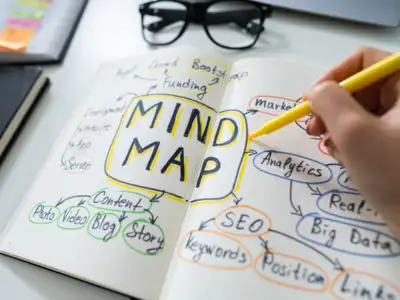Latest Education news – Board Exam Results, Admit Cards, Exam Paper Analysis and Question Papers | Times of India
In today’s fast-paced and information-heavy world, students often face challenges with memory retention and creative thinking. The ability to recall information and think in an innovative manner is essential not only for academic success but also for personal development and problem-solving. Fortunately, the brain—like a muscle—can be trained and strengthened through specific mental exercises.Here are five highly effective brain exercises that can significantly enhance memory and creativity in students.
Mind Mapping
Mind mapping is a visual brainstorming technique that involves organising information around a central idea, with related concepts branching out in all directions. This method leverages both the logical and creative sides of the brain.How it enhances memory and creativity:
- Mind maps engage visual memory, helping students better recall information.
- They foster non-linear thinking, encouraging connections between ideas and enabling deeper understanding.
- Colour, images, and keywords used in mind maps make the learning process interactive and engaging.
How to practice:Start by writing a central topic in the middle of a blank page. Use lines, colors, and drawings to connect related subtopics. For example, when studying a biology chapter, students can create a map with the main theme in the center and related terms, definitions, and processes radiating outward.
Dual N-Back Game
The Dual N-Back is a cognitive training task that involves remembering a sequence of visual and auditory stimuli that appeared “n” steps earlier in the series. It is a scientifically studied method to enhance working memory.How it helps
- The game strengthens short-term memory and the brain’s ability to hold and manipulate information.
- It improves focus, attention control, and mental agility—all crucial for creative problem-solving.
- Regular use is linked to better performance on IQ and reasoning tests.
How to practice:Students can download brain-training apps such as Brain Workshop, Lumosity, or Peak to play Dual N-Back games. A few minutes of practice a day can produce noticeable improvements over time.
Daily Journaling and Creative Writing
Journaling involves writing down thoughts, experiences, or reflections regularly, while creative writing includes crafting stories, poems, or essays.How it helps:
- Writing about personal experiences helps encode memories, making them easier to retrieve.
- Creative writing stimulates imagination, storytelling skills, and expressive language.
- Journaling boosts emotional intelligence, which can improve concentration and clarity of thought.
How to practice:Students can maintain a daily journal where they jot down their thoughts, dreams, or daily experiences. Alternatively, they can use prompts like “What if I had a time machine?” or “Describe a world with no gravity” to spark creativity.
Memory Palace Technique (Method of Loci)
The Memory Palace technique involves visualising a familiar location (like a house) and placing pieces of information you want to remember in specific areas or “rooms.”How it helps:
- It taps into spatial memory and visualisation, which are powerful memory aids.
- The mental imagery required enhances the brain’s creative visualisation skills.
- It’s especially useful for memorising lists, speeches, or historical timelines.
How to practice:Imagine walking through your house and placing items (facts, concepts, formulas) in specific locations. When you need to recall them, mentally revisit each location. For example, the kitchen could hold biology terms, while the living room stores math formulas.
Puzzle Solving and Brain Teasers
Puzzles like Sudoku, crossword puzzles, logic riddles, and number games challenge the brain to think critically and solve problems.How it helps:
- Regular puzzle-solving improves pattern recognition, logical thinking, and strategic planning.
- They stimulate the brain’s reward system, encouraging persistence and experimentation.
- Many puzzles require out-of-the-box thinking, a core component of creativity.
How to practice:Students can spend 10–15 minutes daily working on a puzzle. Resources include puzzle books, mobile apps, and educational websites. Some effective options are Sudoku for logic, word search for language, and tangrams for spatial awareness.Improving memory and creativity is not limited to natural talent—it can be developed through consistent and targeted mental exercises. Techniques like mind mapping, the Dual N-Back game, journaling, the memory palace, and solving puzzles are not only enjoyable but also highly effective in boosting cognitive abilities. By incorporating these exercises into their daily routines, students can unlock their full intellectual potential, excel in their studies, and become more innovative thinkers.
#Brain #boosters #powerful #exercises #enhance #memory #creativity #students #Times #India
